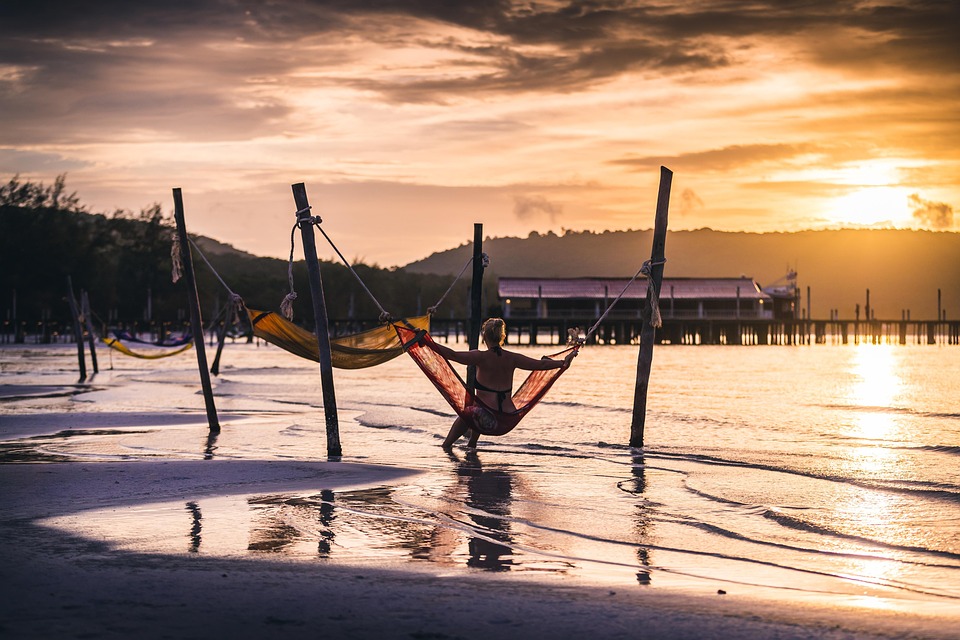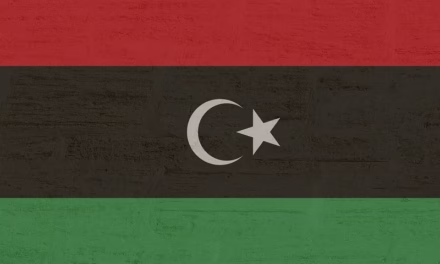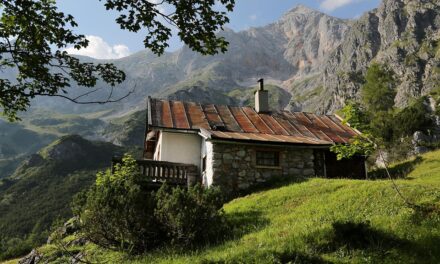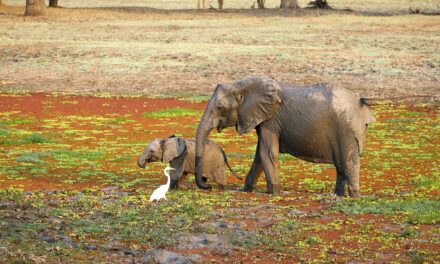When you think of Cambodia, the grandeur of Angkor Wat likely dominates your imagination—a majestic temple complex often hailed as one of the most significant cultural wonders in the world. While Angkor Wat is undeniably a masterpiece, Cambodia is a rich tapestry of unexplored natural landscapes, cultural heritage, and serene escapes that effortlessly captivate adventurous travellers. From pristine islands to ancient temples hidden deep in the jungle, Cambodia’s lesser-known destinations are waiting to surprise and enchant you.
In this guide, we’ll whisk you away from the famed Angkor Wat to uncover Cambodia’s hidden gems. Whether you’re a culture enthusiast, a nature lover, or someone chasing off-the-beaten-path locations, this list will inspire your next Southeast Asian adventure.
Why Explore Beyond Angkor Wat?
Angkor Wat’s magnetic allure sees millions of tourists every year. However, focusing exclusively on this marvel may mean missing out on Cambodia’s other treasures. Beyond the tourist-clad corridors of Siem Reap, you’ll uncover unspoilt beaches, enchanted forests, vibrant villages, and remarkable communities that tell the diverse story of Cambodia.
By exploring other regions, you’ll:
- Support sustainable tourism and local economies.
- Discover a more intimate, authentic Cambodian experience.
- Escape the crowds and explore untouched natural beauty.
Let’s dive into these fascinating must-visit destinations!
1. Koh Rong: The Tropical Island Paradise
When people discuss island escapes, Thailand often grabs the spotlight, yet Cambodia boasts one of the region’s most idyllic islands—Koh Rong. Located off the coast of Sihanoukville, Koh Rong offers white sand beaches, crystal-clear waters, and lush tropical jungles, all without the overwhelming crowds of its neighbouring countries.
Best Experiences on Koh Rong:
- Sok San Beach: A tranquil haven perfect for sunsets, snorkelling, and enjoying lazy afternoons.
- Bioluminescent Plankton: At night, the sea around Koh Rong lights up like a star-studded sky. Take a boat or swim in the glowing waters.
- Hiking Trails: Explore unspoilt jungles that lead to panoramic viewpoints. For adventurous travellers, trekking through the island interiors is a must.
Insider Tip: If you’re seeking even more solitude, visit Koh Rong Sanloem, Koh Rong’s quieter sibling, ideal for unwinding in complete peace and serenity.
2. Battambang: Cambodia’s Artistic Hub
Often overshadowed by Cambodia’s bustling cities like Phnom Penh or Siem Reap, Battambang is a quaint and charming riverside town with a strong art scene and colonial flair. It’s the perfect balance of history, culture, and authenticity.
Highlights of Battambang:
- The Bamboo Train (Norry): An exhilarating ride on this makeshift rail vehicle offers a unique way to explore Cambodia’s countryside.
- Phnom Sampeau: A striking hilltop temple complex with breathtaking views. Don’t miss the caves here, which are both beautiful and haunting due to their historical significance.
- Art Galleries and Cafés: Stroll through the city streets, home to local galleries like Romcheik 5 Art Space, which showcase contemporary Cambodian art.
Local Tip: Take a guided cycling tour to discover scenic villages, rice fields, and stories from locals.
3. Kep: A Serene Coastal Retreat
Nestled along Cambodia’s southern coast, the quaint seaside town of Kep is a paradise for seafood lovers and nature enthusiasts. A stark contrast to bustling Phnom Penh or Siem Reap, Kep’s laid-back atmosphere makes it the perfect escape for travellers in search of tranquillity.
Things to Do in Kep:
- Kep Crab Market: Satisfy your seafood cravings by feasting on freshly caught crabs cooked in Kampot pepper sauce.
- Kep National Park: Trek through lush green trails and enjoy panoramic views of the coastline, islands, and Vietnam’s neighbouring Phu Quoc island.
- Rabbit Island (Koh Tonsay): Take a short boat ride to this serene island where you can laze on sandy beaches.
4. Mondulkiri: Cambodia’s Wild East
Far from the bustling cities lies Mondulkiri, a province teeming with emerald green hills, cascading waterfalls, and untouched forests. This region is home to ethnic minorities like the Bunong people and is perfect for eco-tourists.
Top Activities in Mondulkiri:
- Elephant Sanctuary Experience: Visit ethical organisations such as the Elephant Valley Project, where you can observe elephants in their natural habitat.
- Bousra Waterfall: One of Cambodia’s most stunning waterfalls, perfect for picnics or a refreshing dip.
- Trekking Adventures: Immerse yourself in dense jungle trails while discovering rare wildlife and traditional Bunong villages.
Sustainability Tip: Always opt for ethical sanctuaries to ensure animals are treated with respect.
5. Kratie: The Mekong’s Hidden Treasure
For wildlife enthusiasts, the sleepy riverside town of Kratie is a gateway to spotting the endangered Irrawaddy dolphins in the Mekong River. This peaceful enclave is also steeped in cultural charm.
Must-Do Activities:
- Dolphin Spotting in Kampi: Take a boat and watch these elusive dolphins in their natural environment.
- Koh Trong Island: A short ferry ride from Kratie, this little island offers serene cycling tours through fruit orchards and stilted villages.
- Sunset Views Over the Mekong: Relax along the riverbanks as the golden hues light up the landscape.
6. Preah Vihear: Cambodia’s Underrated Temple Complex
While Angkor steals the limelight, Preah Vihear is an ancient Hindu temple perched majestically atop a mountain on the Cambodia-Thailand border. A UNESCO World Heritage site, this architectural wonder offers a more secluded experience compared to the highly frequented Angkor Wat.
Reasons to Visit Preah Vihear:
- Incredible panoramic views of the surrounding landscapes.
- A stunning example of Khmer architecture, dating back to the 9th century.
- Fewer tourists, meaning you can immerse yourself in the peace and spirituality of the environment.
Travel Tip: The best time to visit is early morning or late afternoon to avoid the heat and enjoy mesmerising views.
7. Cardamom Mountains: Nature’s Playground
For adventurers and nature lovers, the Cardamom Mountains form one of Southeast Asia’s last great wildernesses. Spanning several provinces, these lush rainforests are a sanctuary for rare wildlife and a haven for eco-tourism.
Activities in the Cardamom Mountains:
- Kayaking in Tatai River: Paddle through tranquil waters surrounded by rainforest.
- Wildlife Expeditions: Spot elusive species like sun bears, clouded leopards, and gibbons.
- Zip-Lining Adventures: Thrill-seekers can whiz through the canopy at places like Chi Phat.
Eco-Friendly Travel Tip: Stay at eco-lodges that support local communities and promote sustainable practices.
8. Tonle Sap Lake: The Heart of Cambodian Life
To truly understand Cambodian culture, visit Tonle Sap Lake, Southeast Asia’s largest freshwater lake. Not only is the lake a vital source of livelihood for local communities, but it also offers visitors insight into the region’s unique floating villages.
What to Experience at Tonle Sap:
- Floating Villages: Take a boat tour to explore communities like Kampong Phluk, where houses perch on stilts.
- Bird Watching: The nearby Prek Toal Bird Sanctuary is home to rare bird species, perfect for avid birdwatchers.
- Fishing Traditions: Learn traditional fishing techniques from local fishermen.
Travel Tips for Exploring Cambodia’s Hidden Gems
- Pack Lightly but Wisely: Bring lightweight clothes, sunscreen, and insect repellent, especially for jungle treks.
- Respect Local Customs: Dress modestly when visiting temples or local communities.
- Travel in the Dry Season: Between November and April, you’ll enjoy calmer weather and easier transportation access.
- Hire Local Guides: They bring invaluable insights while supporting the local economy.
FAQ: Unveiling Cambodia’s Hidden Gems
1. When is the best time to visit Cambodia?
The best time to visit Cambodia is during the dry season, from November to April, when the weather is cool and travel conditions are ideal.
2. How can I get to Koh Rong?
You can reach Koh Rong by taking a ferry from Sihanoukville, available through several private operators that run daily.
3. What should I wear when visiting Cambodian temples?
Wear modest clothing covering your shoulders and knees when visiting temples in Cambodia to show respect for local traditions.
4. Is Koh Rong good for families?
Yes, Koh Rong has family-friendly resorts and calm beaches ideal for families with children.
5. Do I need a visa to visit Cambodia?
Most travelers require a visa, which can be obtained on arrival or via an e-visa. Check the latest requirements based on your nationality before traveling.
6. Is Cambodia safe for solo travelers?
Cambodia is generally safe for solo travelers. Exercise standard precautions against petty theft and avoid isolated areas at night.
7. What currency is used in Cambodia?
The Cambodian Riel (KHR) is the local currency, but US dollars are widely accepted. Carry cash for rural areas.
Conclusion
Cambodia’s hidden gems offer a treasure trove of experiences far removed from the well-trodden paths of Angkor Wat. From the bioluminescent waters of Koh Rong to the misty peaks of Mondulkiri, each destination promises unique adventures and cultural immersion. By venturing beyond the iconic temples, you’ll not only enrich your travels but also contribute to sustainable tourism practices that empower local communities. Cambodia’s true essence lies in these untouched corners—ready to inspire, challenge, and transform every traveler willing to explore deeper.












Subscribe To Our Newsletter
Join our mailing list to receive the latest news and updates from our team.
You have Successfully Subscribed!